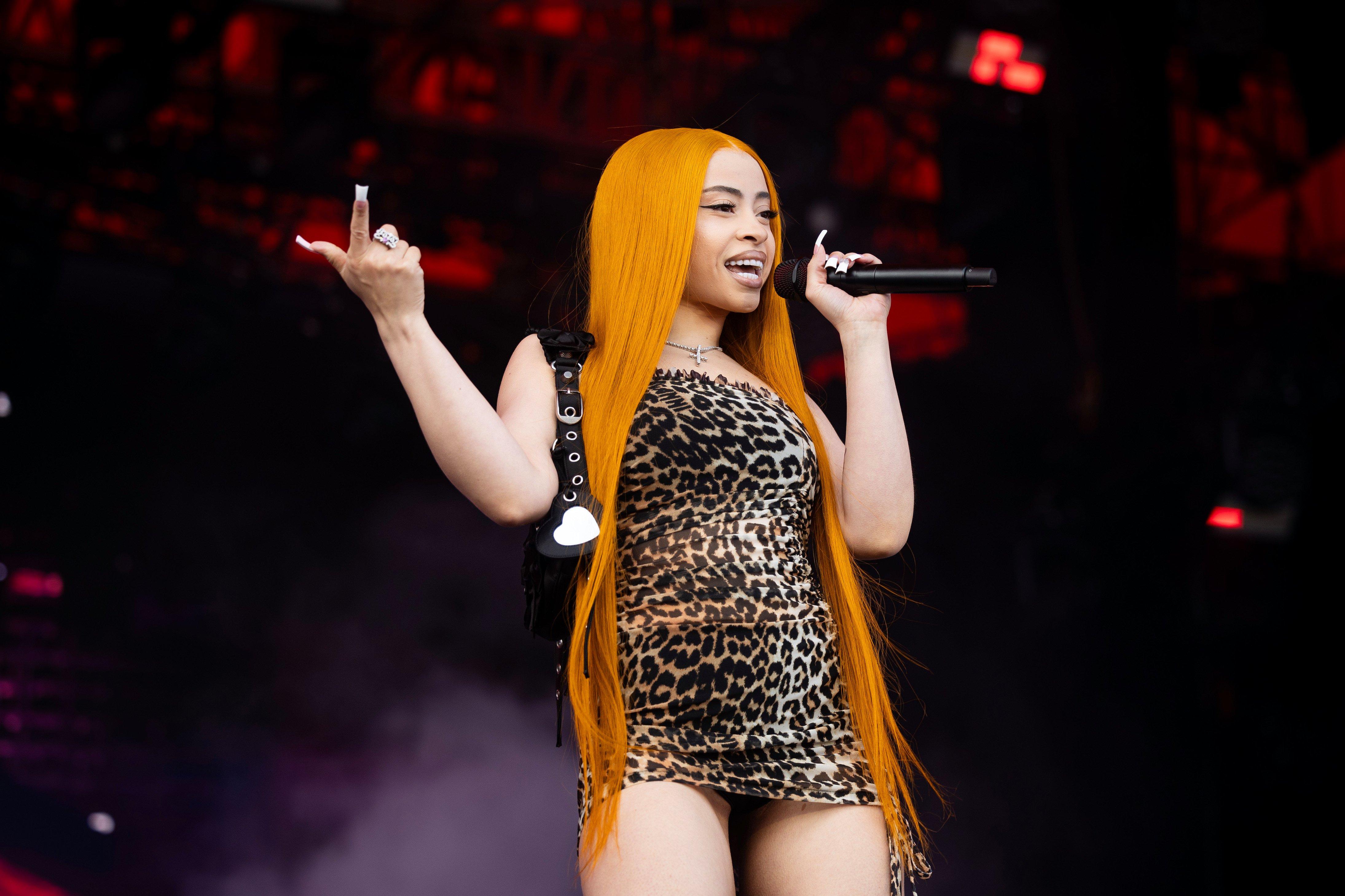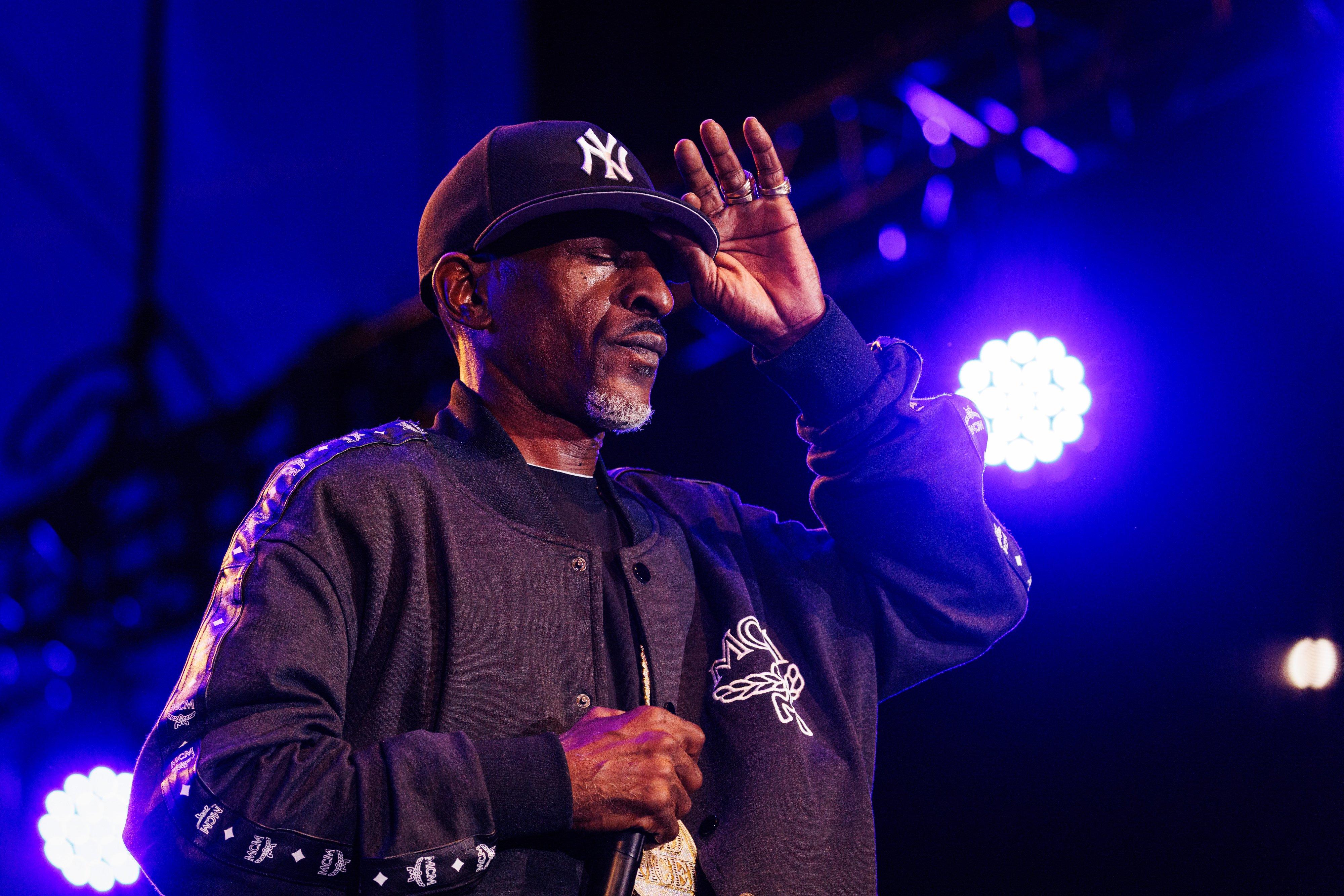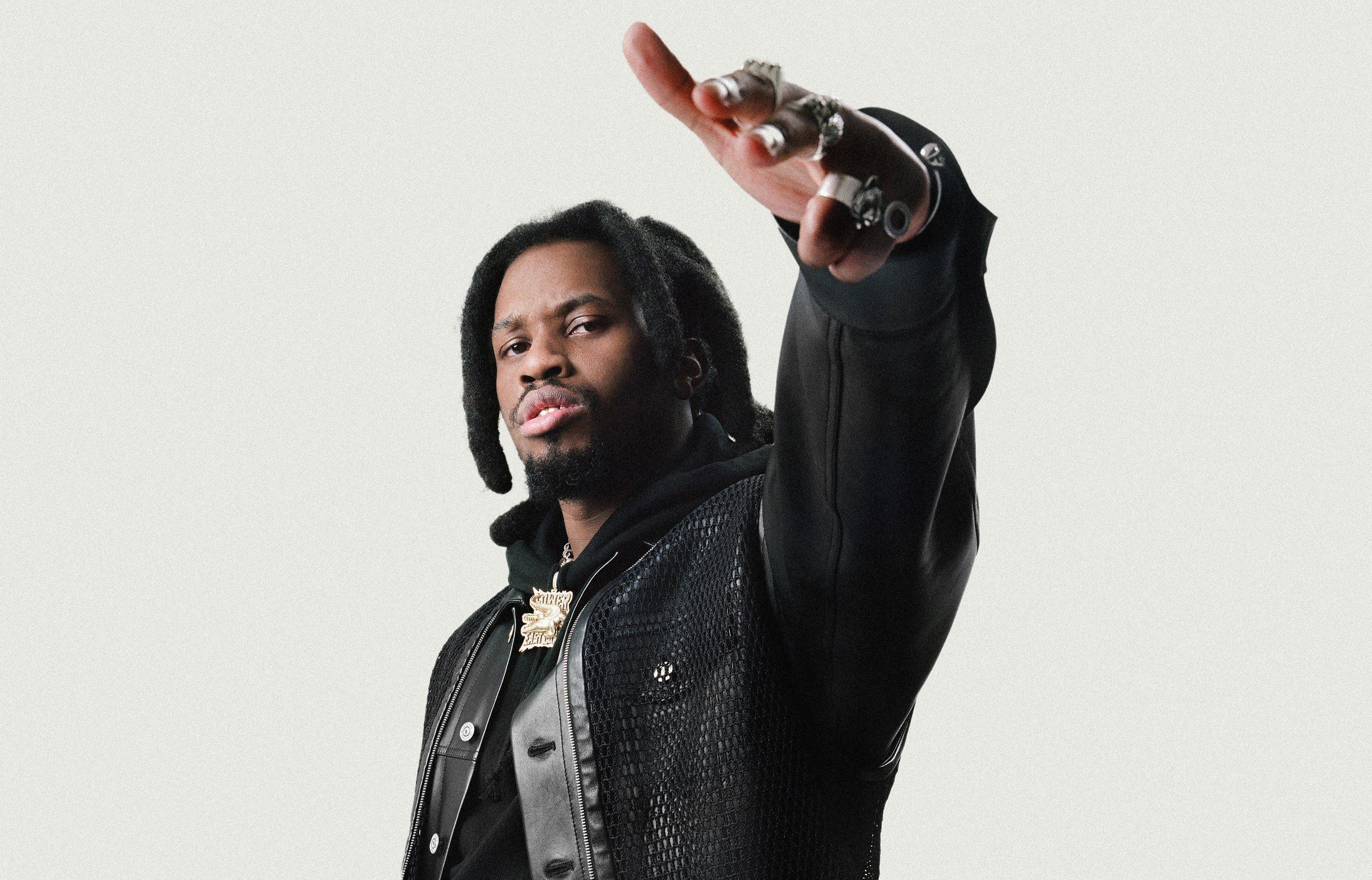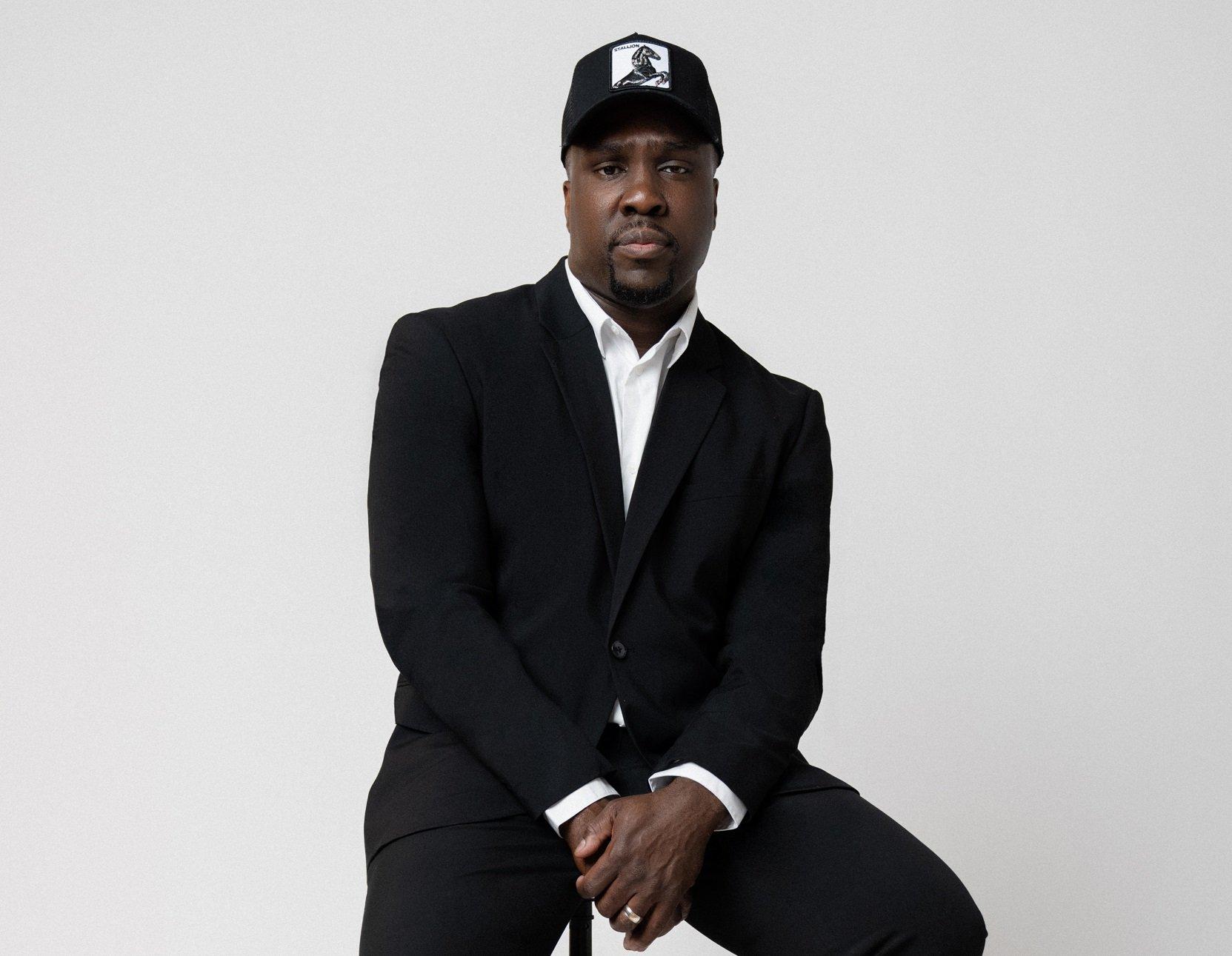Here's a quick timeline of rapper Jack Harlow's 2020: "Whats Poppin" is released in January; the song is certified platinum in May; the remix with Lil Wayne, Tory Lanez and DaBaby helps the record skyrocket to No. 2 on the Billboard Hot 100 in June; his debut album That's What They All Say debuted in the Top 10 on the Billboard Top 200 in December. However, that's only the surface. Between the crevices of the solid foundation laid by the 22-year-old rising star's success were years of struggles with the perpetual visibility that comes with fame—and the introspection pandemic-induced solitude brings.
Rap fans have seen Harlow grow before our eyes. Still, the moment Harlow felt like he made it in music wasn't when he got his first platinum single, or when he got his XXL Freshman selection, or even when he made his television debut on "The Tonight Show Starring Jimmy Fallon."
"I remember the night the album dropped, we were out celebrating, and [DJ] Drama looked at me and said, 'You're here now.' I can tell by the way he said it that he wasn't just saying it in a loose way. He meant it," Jack Harlow told GRAMMY.com. "I was like, 'Damn, you think so?' He was like, 'Absolutely; you're locked in. You're here.' That was special because I felt like he was right at that moment."
Signed to DJ Drama's Generation Now label since the summer of 2018, the Louisville, Kentucky, native has grown from a mixtape darling to a bona fide star. He did so mainly thanks to "Whats Poppin," which earned him his first-ever GRAMMY nomination for Best Rap Performance at the 2021 GRAMMY Awards show—barely over two years after becoming a signed artist.
In a recent chat with GRAMMY.com, Harlow spoke about the validation of his GRAMMY nomination, how he made "Whats Poppin," and the idols he's turned into fans.
This interview has been edited and condensed for clarity.
Describe the moment you found out you were nominated for a GRAMMY.
I was watching them announce it live. I was waiting as they went through all the categories. It felt like hip-hop was last. I was watching, patiently waiting. They started listing Best Rap Performance, and sure enough, "Whats Poppin" is there. Then, I had this moment of "What the hell?" because they put Luke James. It said, 'Whats Poppin" by Luke James. I was like, "Yo!" It didn't stop my celebration because I knew there was only one "Whats Poppin."
I was turnt. I got calls after calls. I got calls while I was on a call! The calls were pouring in. It was a special day. It was validating. I definitely didn't expect to get nominated this early in my career. I'll take it.
How do you feel this GRAMMY nomination and possible win might affect your career going forward?
It's a great stamp. It's something I can carry with me for the rest of my life. A win would be huge but to be nominated is a great step for me. If anything, it just raises the bar. I love when these things happen because it gives me something higher to shoot for, to keep pushing myself. I'm forced to hold myself to a certain standard now. I'm GRAMMY-nominated.
How did you make the song that eventually would net you your first GRAMMY nomination?
I was on the very last tour I did before the pandemic and Jetson[made] DMed me saying he wanted to do work. At the time, I wasn't in touch with a lot of the hottest producers in the game. I had a few relationships, don't get me wrong. [But] this was an exciting message because it was someone who was dominating things and making songs that were touching the culture.
I was excited to get to Atlanta to work with him. So, the very first day I went back to the studio I told him to come through. The second day we worked, he invited Pooh Beats to the studio and Pooh started playing the beats he and Jetson had made. As soon as I heard the piano keys [on "Whats Poppin"], before I heard the drums, I knew I needed that.
I told him to load it up. It was one of the best beats I ever heard. From there, I made the decision to not overthink and specifically remember telling myself, "Yo, say the first thing that comes to mind for every line." I did that and the rest was history. It came together in a really special way.
<style>.embed-container { position: relative; padding-bottom: 56.25%; height: 0; overflow: hidden; max-width: 100%; } .embed-container iframe, .embed-container object, .embed-container embed { position: absolute; top: 0; left: 0; width: 100%; height: 100%; }</style><div class='embed-container'><iframe src='https://www.youtube.com/embed//w9uWPBDHEKE' frameborder='0' allowfullscreen></iframe></div>
Saying you made it without overthinking helps me understand certain lines from the song, like when you say "Just joshing." It sounds like it was you just having a regular conversation.
It's crazy you bring that line up, because I just did an interview with SPIN and I was telling them what I just told you, about not overthinking. That's why that line is in the song. I refused to let myself stop. I always planned on replacing that line. To this day, I'm kind of not a big fan of that line. It's kind of taken on a life of its own, so it is what it is. The whole time I had that song I was saying, "Yeah, I'm going to replace that line." Me saying "Just joshing" was a placeholder; it was silly. But, then that shit stuck.
What was the hardest part about breaking through and getting that recognition when you started out?
It was an internal battle. I think I was figuring out myself as an artist. I still am, but I'm a little older now and I've grown into a man. The process of being a teenager is you learning about yourself. You're learning what you want to project. At the same time that I'm discovering myself, I'm making decisions about what type of artist I want to be and I have all this pressure on myself to honor who I really am.
I'm more comfortable in my skin than I've ever been. I'm more comfortable in what I'm projecting because I'm secure in it. When I was younger, I did a lot of projecting what I thought people wanted me to be, or what I thought people saw me as. Now, I'm being exactly who I am.
<style>.embed-container { position: relative; padding-bottom: 56.25%; height: 0; overflow: hidden; max-width: 100%; } .embed-container iframe, .embed-container object, .embed-container embed { position: absolute; top: 0; left: 0; width: 100%; height: 100%; }</style><div class='embed-container'><iframe src='https://www.youtube.com/embed//HIwAI05Y1fU' frameborder='0' allowfullscreen></iframe></div>
On "Keep It Light" from your album, you say you aren't comfortable getting all of the praise. Are there moments over the last year that depicts how the fame you've acquired hasn't been all great, and you had to adjust?
Truth be told, I'm an attention whore. I do love the praise. I love the attention. But, there are moments where I'm channeling a different part of my personality. I have a certain percentage of me that is an introvert and isn't always in the mood to be praised or reciprocate energy for people.
There are moments when you have fans lurking and you don't want to deal with them at that moment or have to talk with them at that moment. Or, sometimes you're at parties and you don't want to talk about yourself. Sometimes you're back home and you're with the people you grew up with and you just want a break from the conversation being about you because it's uncomfortable.
For me, it feels a little braggadocious and gets uncomfortable at times. It's not that I hate it all the time, there are just moments. I love my fans and it's very validating to run into them in public and they make me feel good. But, I'm a moody person like most people.
Are there any things you've been able to get for yourself with your new fame and status that you've always wanted to get?
I remember about three or four years ago, I told everyone I'm close to that I was going to get the Static Major "Kentucky" chain, which is the silhouette of Kentucky. A few months ago, I finally did it. That was a huge moment for me to follow through on what I said. I don't have too many material things I want. The best thing about money is not having to worry about money. There's no item you can buy that's better than that.
You're signed to Generation Now with DJ Drama. What lessons did he teach you about this music industry that you applied to your career?
It's still ongoing to this day. He has opinions on what kind of car I should go out to the club in. He's constantly schooling me. We spend a lot of time together, so he tells me stories about the past. He gives me ideas on the way to maneuver and handle relationships.
He gives me tons of game. He's been in it for so long, there are certain traditions he speaks on that I enjoy honoring. I know I have to carve my own path, and I like to be innovative, but I have somebody who has a love for tradition.
How long did it take the album to come together and how did the pandemic affect its making?
I had a couple of songs that were started before the pandemic, but you can mark the beginning of the pandemic as when I started working on this album. I remember on the day everyone found out we had to go inside I made a mental note of making this album. "Whats Poppin" was moving and I knew it was time.
That first month of being in the house terrified and not knowing what was going on or going outside, I was inside writing and I wrote four or five songs on that album in the first couple of weeks. I wrote "Tyler Herro," "Baxter Avenue" and "Funny Seeing You Here" in the first week or so. I think I just hit a groove while in the house. I think that's where a lot of that introspective nature came from. I think I would've made a lot more party songs.
One silver lining that came from being inside was I was looking inwards. You listen to Sweet Action and that's full of party records because that's what my life was. So, when I had to sit inside for a bit, I got reflective and it was a good thing for that album.
Who were some surprising celebrity fans of yours since the success of "Whats Poppin?"
[Long pause] I've met Drake once or twice. We've talked a couple of times, and he's tuned in and listening. He's had some kind words. That definitely meant a lot to me because I'm a Drake stan, so getting that recognition from him was super special. To hear he was fond of the music, or co-signed the music, was very validating to me.
Lil Wayne is another one. Wayne loves my shit and he got on the remix. That was a huge deal to me. The reason I paused for so long was that there's one I can't wait to announce that I recently connected with. It's not time for me to say who yet because there's more to it. Hopefully, after this interview comes out, people can connect the dots. This is a big one; it's a bucket-list one.
<style>.embed-container { position: relative; padding-bottom: 56.25%; height: 0; overflow: hidden; max-width: 100%; } .embed-container iframe, .embed-container object, .embed-container embed { position: absolute; top: 0; left: 0; width: 100%; height: 100%; }</style><div class='embed-container'><iframe src='https://www.youtube.com/embed//np9Ub1LilKU' frameborder='0' allowfullscreen></iframe></div>
Pull Up On The Best Rap Song Nominees | 2021 GRAMMYs













